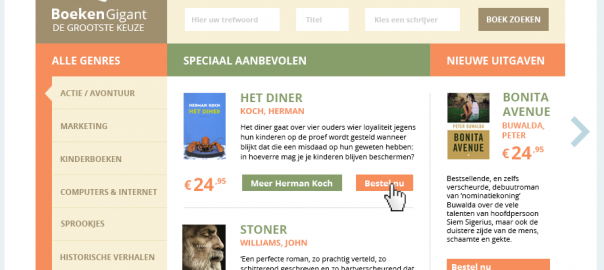When I built my first eCommerce business, every order mattered. We accommodated as many customer requests as humanly possible to get product shipped out the door and into happy shoppers’ hands to earn an extra buck. Sometimes, we even fulfilled orders at cost because we were so eager to grow our customer base and get the word out. But when an order came in from Canada, we weren’t quite sure what to do. As a U.S.-based company focused on servicing customers in all 50 states, we felt overjoyed. It seemed as though we could open ourselves up to a completely new market and multiply sales that way. But our first cross-border shipment was disastrous. First, our shipment was delayed because we honestly didn’t know how long it would take to ship to British Columbia. Then, the product arrived in the wrong size (the customer thought he was getting a product measured in centimeters not inches), so we had to do an exchange. Finally, after the right product in the right size landed, we found payment to be tricky on two fronts. For one, the customer didn’t realize he was paying in USD so his bank charged him currency exchange fees. Our payment processor also charged us a fee for accepting a foreign transaction. The unanticipated fees, plus the cost of delivering to Canada and the cost of exchanging product decimated our already thin margins. On our first international customer, we actually lost money.
However, our story isn’t unique.
Almost every store owner I know has flirted with the idea of selling their products abroad. And there are countless stories about overseas orders gone wrong. Yet, the promise of sales growth is highly appealing; selling to a different country means access to thousands of potential new customers. Of course, for some, the challenges outweigh the opportunities.
Some businesses are incredibly successful because they stay committed to and focused on serving customers in their home market only. Others profit largely because they can sell beyond their geographical borders.
Below, I’ve included 11 strategies that will help you:
- Decide whether or not to expand overseas
- Overcome the major obstacles of international expansion
1. Gauge demand
In eCommerce, it can feel as if the world is your oyster. Because the Internet is border-free and global expansion can be done in the comfort of your own home (wherever that may be), it is always tempting to arbitrarily pick a new market to expand into. Data-driven store owners, on the other hand, rely less on their instincts and look to their existing customer base first to identify international demand. You may discover that a majority of your international orders originate from one location, which is where you may begin to focus your overseas expansion efforts.

If you haven’t yet sold any product to international customers, review old customer inquiries to see if there are any requests to ship to specific countries. Or look at your website’s analytics to see where most of your international traffic comes from. Alternatively, use Google Trends to measure interest in your product in certain countries around the world. Over the past year, for example, hoverboards have become incredibly popular in the U.K.
2. Understand foreign currencies and prices
Before you price your products, gather an understanding of the value of each country’s currency relative to your own and how much locals already pay for similar products.
$ 50 USD in the U.S. may equal about $ 71 AUD in Australia (with a 1.42 exchange rate) but a product worth $ 50 USD in the U.S. may be worth $ 73 AUD to Australians. That is because Numbeo estimates consumer prices in Australia to be 3.17% higher than in the U.S.
Also, as a rule of thumb: avoid countries with historically high inflation. This year, the IMF predicts inflation in Venezuela will rise a whopping 720% which means any Venezuelan bolívar you earn is guaranteed to be worth a fraction of what it once was before the year is over.
3. Account for local and import taxes
In Spain, the value added tax (VAT, also known locally as IVA) is 21% for most consumer goods. This is a huge cost to account for when most U.S. stores only charge a single-digit sales tax. And when importing product, eCommerce companies must be mindful of how much more they may have to pay on duties. In Thailand, most imported goods are taxed between 10% and 80%, which does not include the country’s 7% VAT.

While it is possible to pass these additional costs onto the consumer, such price premiums may make it difficult to sell any product.
4. Distribute limited products
Your best-selling products in the U.S. might seem silly to customers in Brazil. Surprisingly, products you may have discontinued last year may be in high demand in Norway. Before you initiate international expansion, conduct thorough research to identify which of your products you should export to certain markets. This will help you keep costs down and build a brand that actually understands locals’ needs in different countries.
5. Pilot sales on local marketplaces
Before heavily investing in launching your product in a new market, test how well it will sell by distributing it on local marketplaces. For example, you can resell your product on MercadoLibre (Argentina’s eBay equivalent) to see which copy, prices and products customers around Latin America may respond to. To target Chinese consumers, you can market your products on Taobao. For Japan, Rakuten.

This is a safe, risk-free way of teasing a new market with your product to gauge its potential. With instant access to millions of shoppers, the hard work is already done for you.
6. Develop local packaging
Starting out, eCommerce store owners should reuse their original product packaging on international orders. It’s cost-effective and easy. But overtime, issues arise when some customers are unable to understand how to use their products or when shoppers endanger themselves because the safety warnings are in an unfamiliar language. And, of course, local governments may crack down on products that do not meet their regulations. In Quebec, Canada, products must be labeled in French and English to accommodate their bilingual residents.
7. Partner with local distributors
When you only fulfill a handful of orders each month in a certain market, it may be most cost-effective to ship product either directly from your manufacturer to the customer or from your main distribution center where your company is headquartered to buyers. Unfortunately, this can cause unnecessarily long shipping times. As demand for your product grows in overseas markets, it may make sense to ship product in bulk to local distributors who can warehouse your inventory and ship product locally as soon as an order is placed. Local logistics companies may even help you manage and process returns too.
8. Create a localized site

Entering a market as an outsider can be tricky. Most eCommerce managers assume it is as easy as cloning their original website and translating some text. Wrong. There are many cultural nuances that impact how shoppers will receive your marketing messages and respond to your offers. Work with local graphic and web designers to build an online shopping experience customers in a certain geographical area would appreciate more. Spend some time exploring other eCommerce sites targeting the same audience to gather a sense of how their websites are structured. This should also provide insight into how your target customers shop online.
And to instantly create trust among shoppers, purchase a country-specific domain. In South Africa, shoppers are more responsive to websites with a .co.za domain extension. Chinese customers tend to be more open-minded about stores with a .cn URL.
9. Make company representatives accessible
For shoppers everywhere, quality customer service is a major reason why certain brands are preferred over others and why people remain loyal to specific stores. So although you and your team may be halfway around the world, you will want to make yourselves accessible to clients who may have complaints or concerns with your product. If possible, provide live customer support through instant message and over the phone using a local number. And at the very least offer customer support through email with the promise that you will respond within 24 hours.
When you start to process hundreds of orders each month in a certain market, consider hiring someone local to lead customer support as they will be better able to empathize with customer issues and can be accountable for timely responses during local business hours.
10. Provide customer-friendly payment options

In the U.S., credit cards and PayPal are preferred payment options among online consumers. In Germany, customers largely pay for product through bank transfer after products are delivered. Shoppers in the Netherlands use iDEAL. In China, Alipay is the country’s answer to PayPal. Consumers in other markets pay cash upon delivery. Avoid assuming that shoppers everywhere are happy to pay for their product in advance and with a credit card.
11. Beware of fraud
One of the biggest risks of expanding your business overseas is encountering fraud. Thieves can steal your information and liquidate your local bank accounts or order thousands of products on fake or stolen credit cards. While that may happen in any country, these unfortunate occurrences may be near-impossible to reconcile remotely.
To mitigate the risk of becoming a victim of fraud, eCommerceWeekly advises taking a careful look at irregular transactions such as:
- “Larger than average orders”
- “Large quantities of the same item”
- “Big-ticket item orders”
- “Rush or overnight delivery orders”
- “Multiple shipments to the same address, but processed with different payment methods”
- “P.O. box vs. physical address for the shipment destination”
- “Names that don’t match up with the email address”
Lastly, know your legal options for recovering stolen resources.
Closing thoughts
Although selling your product abroad comes with many complications, it can be incredibly rewarding. If market forces at home (such an economic downturn and a general dip in local consumer spending) stymie growth, consider expanding your store to markets where shoppers are eager to spend money and purchase your products. Going global is easy if you do your homework beforehand. In some cases, too, you may earn more selling to foreign countries than you do to your home state.
Digital & Social Articles on Business 2 Community(41)
Report Post








